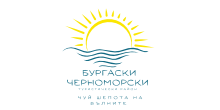Burgas
The largest town in southeastern Bulgaria and the second largest town on the Bulgarian Black Sea Coast. Burgas is the most important cultural, economic, transport, administrative, tourist and educational centre in Southeastern Bulgaria and it is of national importance. The city is the administrative centre of the municipality and province of the same name, as well as the seat of regional and national institutions. Near Burgas are:
